
Sheffield Date Letter Chart Online Encyclopedia of Silver Marks, Hallmarks & Makers' Marks
A pottery mark is a stamp, logo, or signature on a piece of pottery or porcelain. Pottery marks can be found on the bottom of a piece and used to identify the maker, the country of manufacture, and sometimes the date it was made. A few makers used paper labels instead of pottery marks, but these can be tricky to identify.

Derby marks, 1876. Artist Unknown Stock Photo Alamy
Pottery -- Great Britain -- Marks -- Identification, Porcelain -- Great Britain -- Marks -- Identification, Porcelain -- Marks, Pottery -- Marks, Keramiek, Merken, Great Britain, British pottery & porcelain Makers' marks, to 1975 Identification manuals Publisher London : Barrie and Jenkins Collection inlibrary; printdisabled; internetarchivebooks

Porcelain Marks, Pottery Marks and Ceramic Marks Guide
Pottery marks and porcelain marks are like silver hallmarks - often difficult to decipher, frequently duplicated with very small variations by other manufacturers, and changing with periods of manufacture and management of the pottery or porcelain factory.
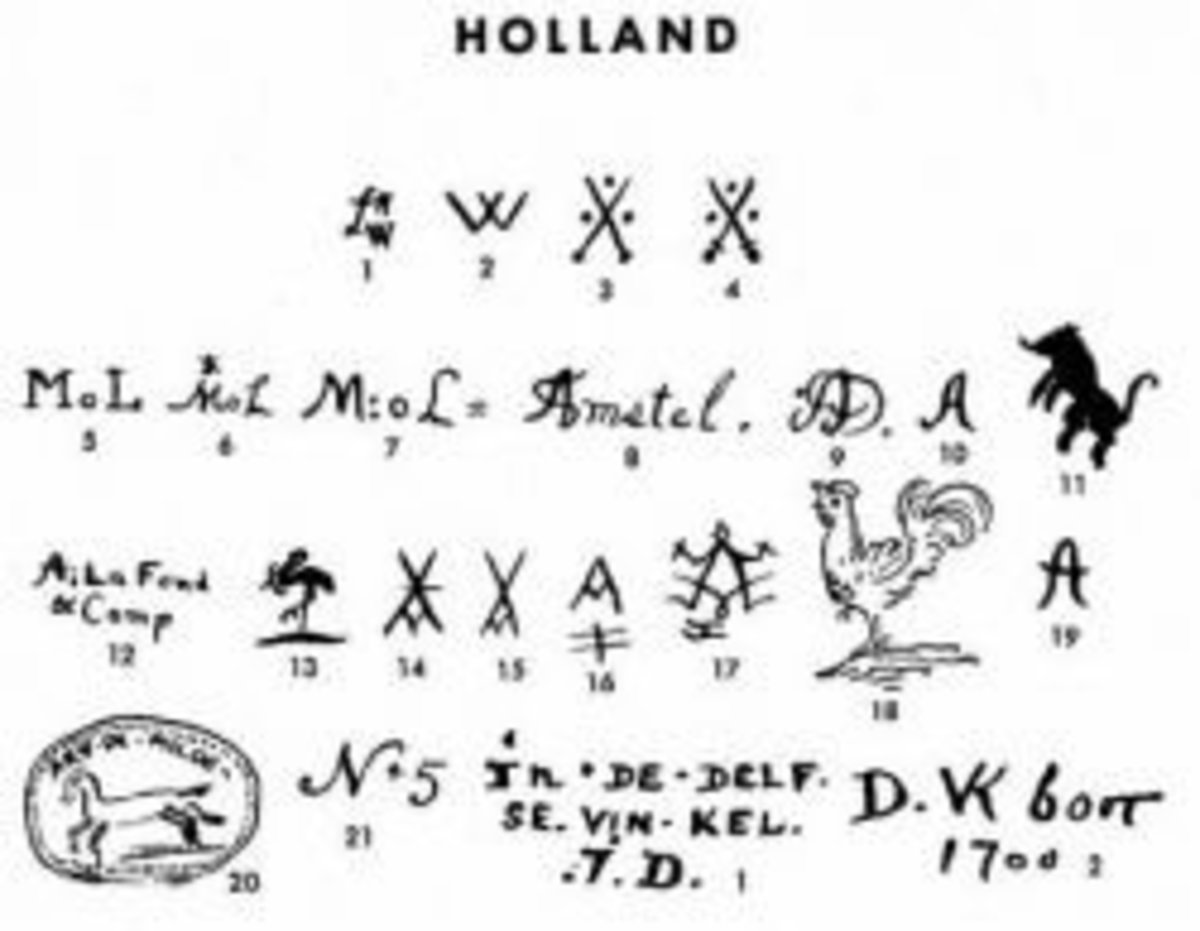
Delft Pottery Marks And History And Information HubPages
The earliest porcelain mark in the history of European production is the monogrammed Meissen "AR" mark, which stands for Augustus Rex, sometimes known as Augustus the Strong. As king of Saxony in the eighteenth century, Augustus commissioned the first production of European hard-paste porcelain.

Aynsley, Aynsley bone china, Antique knowledge
The marks often depend on the country of origin, as well as the time period. "Marks can also date the piece," Slavid says. Wedgwood, for example, has been around since the late 1700s and the brand marks have undergone variations over the centuries.So, brand marks go a long way in identifying the creator and the era in which the piece was made.
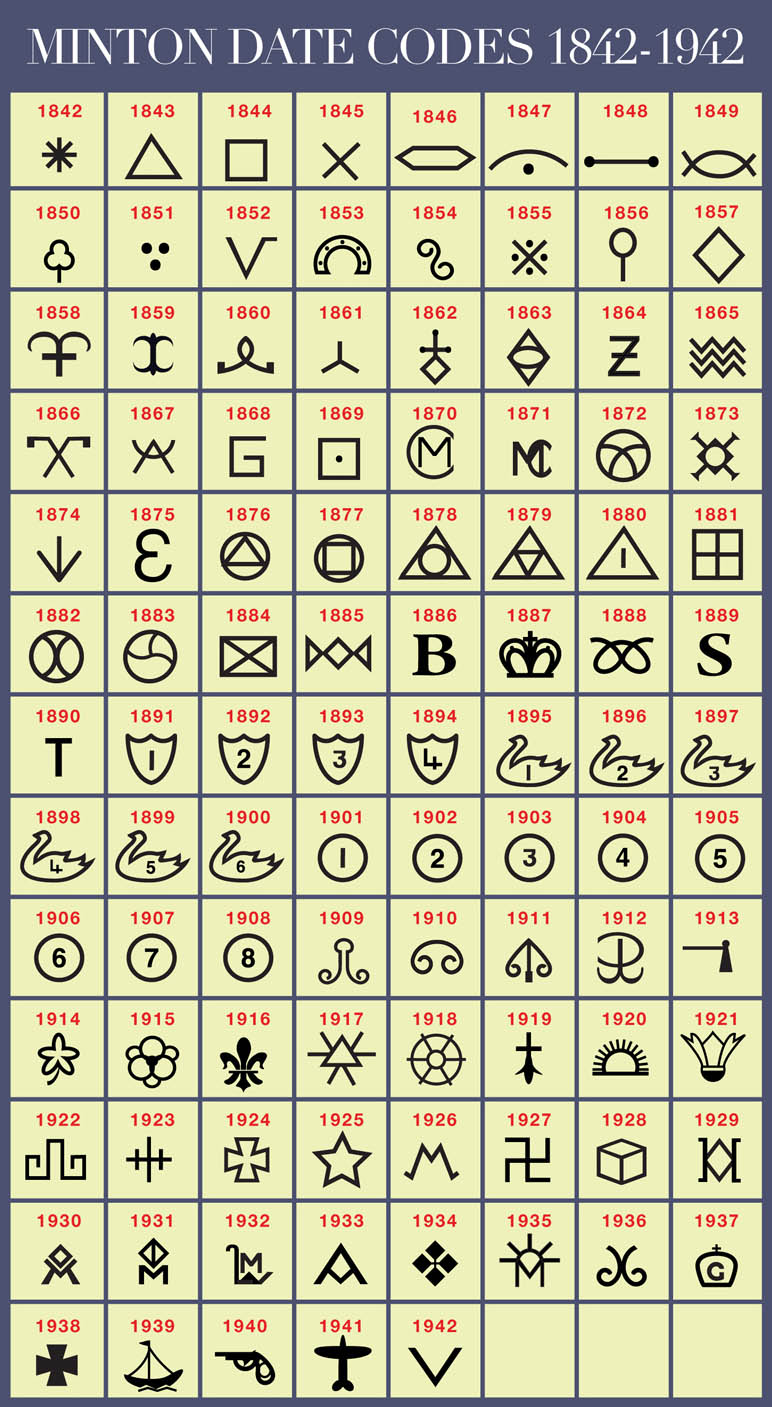
Glazed and Confused Majolica Pottery Marks Minton Date Codes
Forgeries and reproductions. The practice of marking pottery and porcelain in the 18th century in Europe and Britain was never regularised. The factories of note added marks to their work, and many imitators left theirs unmarked, or added marks that were likely to be mistaken for the famous factories. For example, the Meissen crossed swords.

Porcelain & Pottery marks Antique porcelain, pottery books Pottery marks, Pottery makers
PotteryandPorcelain HAGUE(The) TheArmsof. BOW. Bow BUTTERFLY. CHINESEOnoldNankin I CADUCEUS. DRESDEN Thismarkvariesverymuch. WORCESTER InimitationofDresden hpyblua177-sppblue173-hppblue hppblue1712 sppblue1753 CIRCULARMARKS. FAENZA. maj.pblue15 Andothervarieties,andalso withoutthecircle

Картинки по запросу english bone china marks Pottery marks, Antique porcelain, Antiques
Royal Bonn Sarreguemines Mark France Wien Keramos Austrian c1930 Mayer & Sherratt c1906 to 1920 Wade Pottery Mark c1957 onwards Gerbing & Stephan G & St c1861 to 1900 Louis Majorelle Makers Mark Staffordshire Porcelain Knot Mark Taxile Doat Mark on Sevres Porcelain M & Co Mark Minton c1841 to 1873
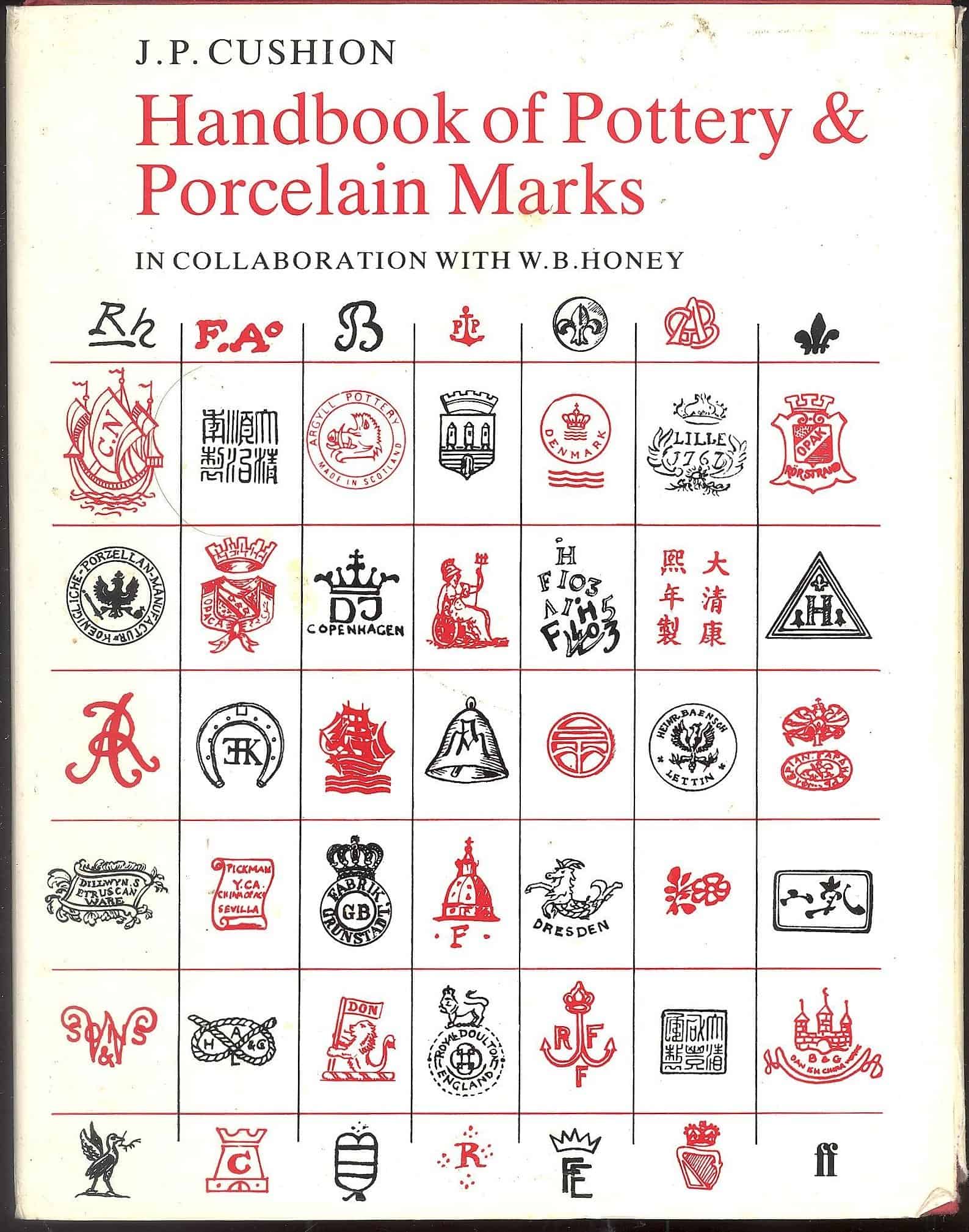
British Studio Pottery Marks Freeforms
Above are typical English maker's marks from Bow, Royal Crown Derby, Royal Worcester, Chelsea and Coalport. Older styles of Chelsea porcelain may feature just a triangle. Below are maker's marks found on German and Prussian porcelain, including Hochst, Frankenthal, Nymphenburg, Erdmann Suhl, Erdmann Reinhold, Reinold Tillowitz and Oscar.

87 best Collection of porcelain & pottery makers marks images on Pinterest Branding, Makers
The Marks on Pottery and Porcelain are of three kinds—factory, workman, and pattern mark. Thefirst is usually placed in a prominent position, sometimes accompanied by the mark of the maker or decorator. Sévres Porcelain, for instance, often having four or five workmen's marks, besides that of the factory. The

Porcelain marks Royal Copenhagen porcelain and Bing & Grondahl Antique Dishes, Antique
The majority of marks date after 1850. Some are current marks. (It may be disappointing, but it is important to know you do not own an antique). Most of the marks listed are from the United States, England, Germany, and France.
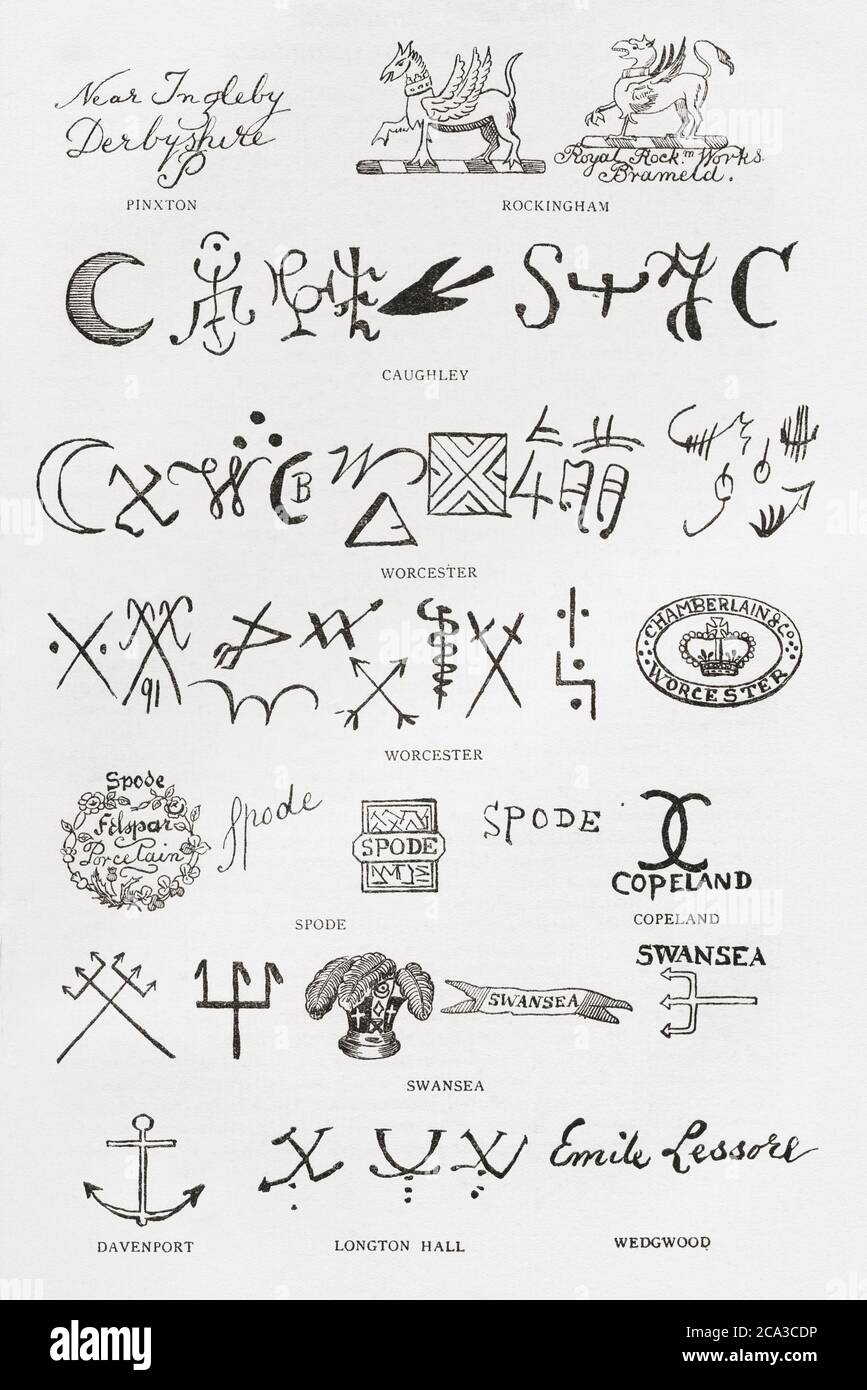
Porcelain marks hires stock photography and images Alamy
Porcelain marks symbols. There is a long tradition of porcelain marks, and it is common that symbols are used, such as a crown or swords. Precisely because of the porcelain brand symbols, it is difficult to know the manufacturer of the porcelain piece without knowing from whom the symbol comes, unless there is still a text next to, below, above or in the symbol, which suggests the manufacturer.

list of porcelain makers Limoges boxes and porcelain marks antique maker marks and names
Identification Help English Registry Marks The diamond-shaped English Registry mark, was used by the English patent office since 1842 to identify pieces of English pottery, porcelain, and other products. It is easy to tell when the ceramic was made. The mark has the Roman numerals "IV" at the top of the mark if it is for a ceramic.
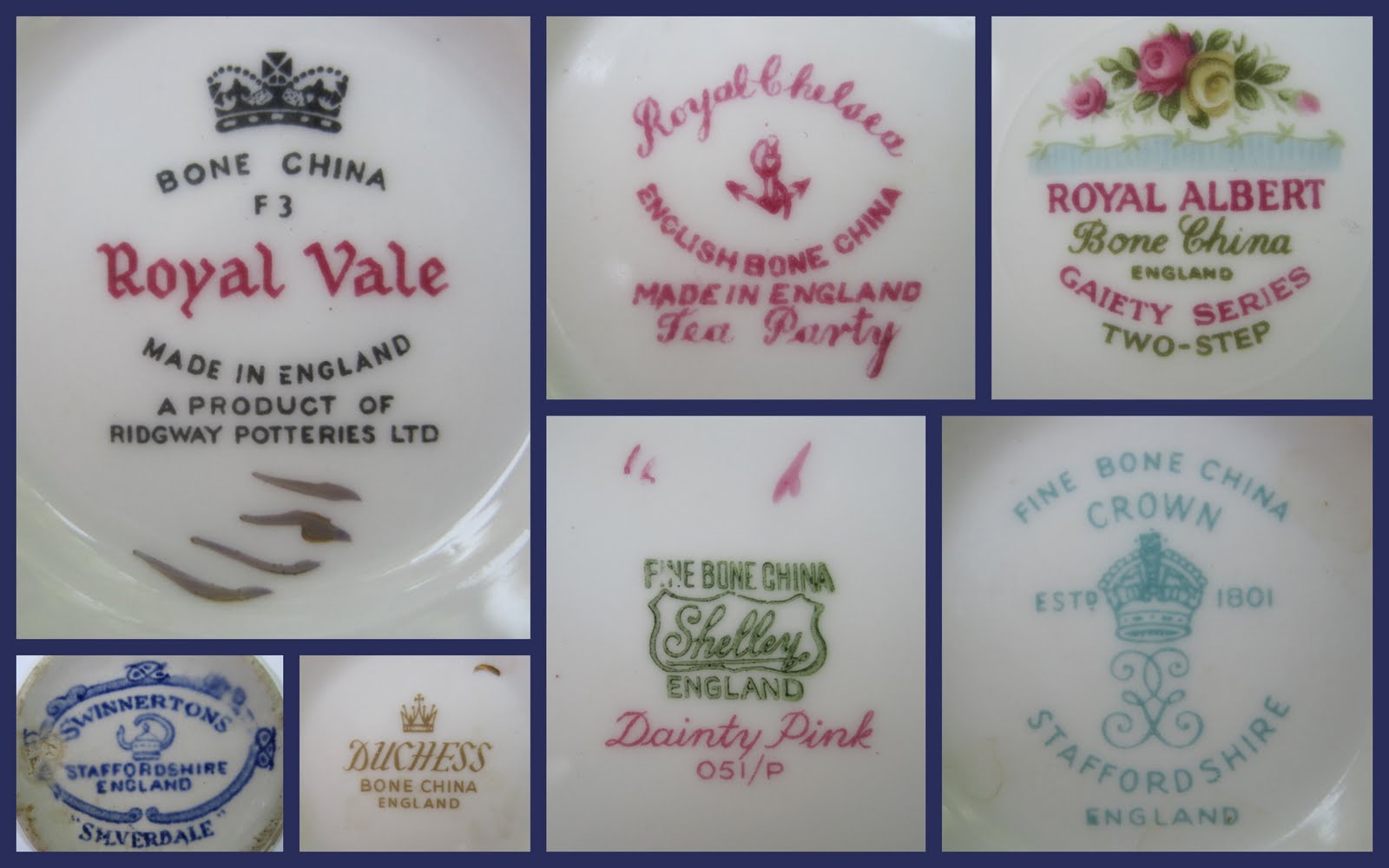
Tea With Friends Researching pottery and porcelain marks
English porcelain marks can indicate: Who made the piece Where the piece was made When the piece was made When a new factory owner was introduced Read on for a loose guide to the porcelain marks used by the major porcelain manufacturers in English history. Chelsea Porcelain Works, Est. 1743

Derby Marks Pottery makers, Pottery marks, Antique pottery
In 1840 the Worcester factory merged with Chamberlains, later to become Kerr & Binns and then Royal Worcester. Worcester Blue and White Porcelain 1751-1790 by Branyan, French & Sandon (B&J) Caughley and Worcester Porcelains 1775-1800 by Geoffrey Godden. Dictionary of Worcester Porcelain Vol .1 1751-1851 by John Sandon.

Porcelain marks Stock Photo 70155911 Alamy Stock photos, Photo, Marks
Dec 22, 2022 5:11 PM EST Wedgwood porcelain plaque By Sailko, [CC BY 3.0], via Wikimedia Commons Need Help With a Pottery Mark or Hallmark? Pottery collectors today are interested in many kinds of pottery and porcelain. It's often hard to identify old pottery because pieces' crests are from all over the world.